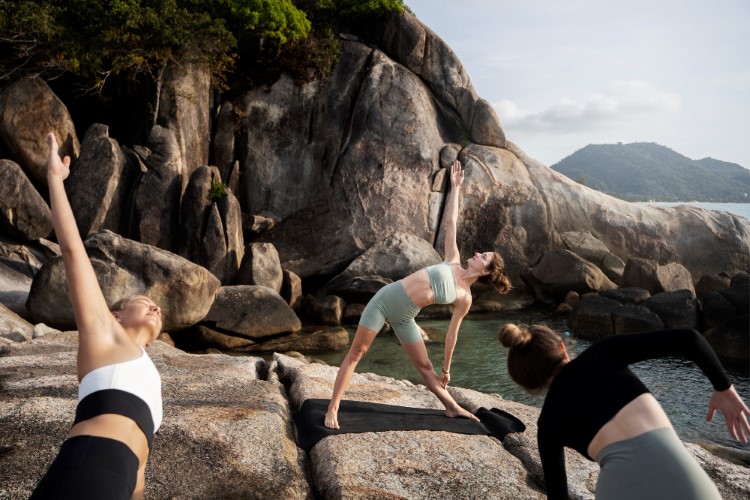The Longest-Living People in This World Share Every One of These Behaviors

The Longest-Living People in This World Share Every One of These Behaviors
In pockets of the world known as Blue Zones—places like Okinawa (Japan), Sardinia (Italy), Ikaria (Greece), Nicoya (Costa Rica), and Loma Linda (California)—people live longer, healthier lives than almost anywhere else on Earth. What’s their secret? It turns out the longest-living people in the world consistently share a common set of daily behaviors that contribute to their remarkable longevity. These aren’t extreme biohacks or expensive regimens. Instead, they’re simple, sustainable habits anyone can adopt.
Here are the key behaviors they all share:
1. They Move Naturally Every Day
Forget gym memberships and high-intensity interval training. Long-living individuals incorporate natural movement into their daily lives—gardening, walking, climbing hills, or doing chores. They don’t “exercise” in the way many of us do; they just stay active throughout the day without thinking about it.

In Sardinia, shepherds walk several miles a day. In Okinawa, elders tend to their gardens well into their 90s. Movement is part of their lifestyle—not a separate event.
2. They Eat Until They’re 80% Full
In Okinawa, the phrase “Hara Hachi Bu” reminds people to stop eating when they’re about 80% full. This practice prevents overeating and gives the body time to properly digest food. The longest-living populations tend to eat slowly, savoring their meals, which also helps regulate appetite and prevent mindless eating.
3. They Follow a Mostly Plant-Based Diet
Beans, whole grains, vegetables, fruits, and nuts form the foundation of the Blue Zones diet. Meat is consumed sparingly, usually just a few times a month. In Nicoya and Ikaria, lentils, chickpeas, and black beans are staples. These fiber-rich foods help lower cholesterol, stabilize blood sugar, and reduce inflammation—key factors in longevity.
4. They Drink Alcohol (But in Moderation)
Moderate alcohol consumption, especially wine, is common in many Blue Zones. In Sardinia, residents often enjoy a glass of Cannonau red wine with meals, rich in antioxidants. However, the key is moderation—usually no more than one or two small glasses a day, and always with food and in the company of others.
5. They Have Strong Social Circles
Connection is crucial to a long life. In Okinawa, moais—small social support groups—help people navigate life’s ups and downs. In Loma Linda, community and shared faith offer emotional stability and support. The sense of belonging and consistent social interaction reduces stress and helps people live longer, happier lives.
6. They Manage Stress Effectively
While stress is a part of life everywhere, how it’s managed varies. The longest-living people intentionally build stress-reducing habits into their day. This might include prayer, naps, meditation, or time in nature. For example, Ikarians take a mid-afternoon siesta, while Seventh-day Adventists in Loma Linda observe a weekly Sabbath for rest and reflection.
7. They Prioritize Purpose
A strong sense of purpose—called “Ikigai” in Japan and “Plan de Vida” in Costa Rica—gives people a reason to get up each morning. Studies show that having purpose can add up to seven years to your life. Whether it’s caring for family, tending a garden, or mentoring others, feeling useful and valued is a common trait among the world’s longest-living people.
8. They Belong to a Faith-Based Community
Faith and spirituality play a major role in the lives of many long-living individuals. Regular participation in a religious or spiritual community—regardless of denomination—has been shown to add years to life. It provides structure, community, and often reinforces positive lifestyle behaviors.
9. They Put Family First

Family ties are strong in Blue Zones. Elders live with or near their children, and multi-generational households are common. Grandparents often play an active role in raising grandchildren, and adult children care for aging parents. This closeness provides emotional security and a deep sense of connection that supports well-being.
10. They Sleep Well and Consistently
Quality sleep is a non-negotiable. People in Blue Zones tend to follow natural sleep rhythms, often rising with the sun and going to bed shortly after it sets. They prioritize rest and avoid over-scheduling, allowing their bodies the downtime necessary to recover and function optimally.
Final Thoughts
There’s no magic pill for a long, healthy life. But by adopting the daily behaviors of the world’s longest-living people, we can greatly improve our own longevity and well-being. These habits aren’t trendy—they’re time-tested, simple, and deeply human. You don’t need to move to a Blue Zone to benefit; you just need to start living like you’re already in one.









